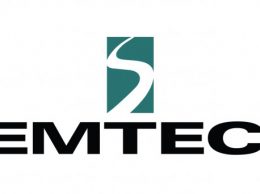Ventura County deals fire up 101 corridor
IN THIS ARTICLE
- Banking & Finance Topic
- Stephen Nellis Author
By Stephen Nellis Friday, January 11th, 2013
Ventura County’s technology corridor has kicked off 2013 with $173 million in deal activity.
Thousand Oaks-based Nexsan Corp., a maker of hard-disk storage arrays for mid-sized businesses, said Jan. 2 that it had been acquired by Minnesota-based Imation Corp. for $120 million. Oxnard-based wireless products company CalAmp Corp. said Dec. 20 that it is buying Wireless Matrix Corp. for $53 million in cash in a deal that is expected to close in March.
Analysts and executives expected both deals to be expansionary for the Ventura County companies. Imation plans to use Nexsan as its entry point to the corporate storage market as it reinvents itself amid declining optical disk sales. And CalAmp is hoping to become a central player in the market for machine-to-machine networking, a technology that’s being used to connect fleets of vehicles and other devices to provide their managers better insights through real-time data. Here’s a closer look inside each deal.
Nexsan
Imation will pay $105 million in cash and 3.3 million common shares, worth about $15 million, for Nexsan. The Thousand Oaks company specializes in selling storage systems to small and mid-sized organizations in the financial services and media industries as well as the public sector. It targets firms who have network storage needs that are too complicated for a simple file server setup but who can’t take on the expense of the vendors used by blue chip firms.
That’s a direction that can help Imation ease its mounting losses, said Mark Miller, an analyst who follows the Minnesota firm for Noble Financial. The company currently makes things such as recordable CDs, DVDs and Blu-ray disks. It had a magnetic tape factory in Camarillo that was once a major employer but shut down in 2008. (That move is unrelated to the Nexsan buy, a spokeswoman said.)
“What Imation is trying to do is manage the structural decline in their core markets,” Miller told the Business Times. “They’ve had extensive losses, and they are trying to reinvent themselves.”
The good news for Ventura County is that means Imation is likely looking to bolster Nexsan’s operations rather than cut them. Nexsan has about 200 employees based in the U.S., U.K. and Canada.
Those employees will join Imation and will operate out of Nexsan’s existing headquarters in Thousand Oaks under Philip Black, Nexsan’s CEO.
Miller, the analyst, said Imation can help Nexsan’s products into new markets with its deeper international footprint and with its cash. “They each bring something to the table that can help the other,” he said.
He warned, however, that Nexsan’s non-disclosure of profitability figures for 2011 probably means there were losses. Nexsan is privately held but kicked off an unsuccessful bid to go public in 2008. At the time, the company had revenues of $62.6 million and a net loss of about $5.3 million. Since then revenue has picked up, climbing to what the company said was $82 million for 2011. Financial filings show the firm turned a profit in fiscal years 2009 and 2010, but Nexsan withdrew its request to go public last year and later profit figures aren’t available.
CalAmp
CalAmp Corp. said Dec. 20 that it is buying Wireless Matrix Corp. for $53 million in cash, announcing the news the same day that it beat analysts’ third-quarter expectations for revenue and earnings.
CalAmp, once known as a supplier of satellite television dishes, has been growing sales and profits by networking machines with other machines. It provides wireless devices that connect fleets of vehicles to provide the managers of those fleets with real-time data. It also provides devices for lenders to attach to cars purchased by borrowers with poor credit in case the lender needs to find the collateral in the event of a default.
CalAmp is building out its software offerings to go with that hardware, said CEO Michael Burdiek. That’s in part because it’s been software, rather than hardware, that’s attracting market value — and coveted recurring revenue to go with it.
“Five years ago, CalAmp was exclusively a hardware company. Through acquisitions and growth, we’ve built a recurring revenue business that’s roughly 10 percent of our wireless data-com business,” Burdiek told the Business Times. Wireless hardware “is quite the challenge from the technology standpoint, but unfortunately the end market customer dictates how much value is attributed to the various layers.”
So the Wireless Matrix deal is an effort to move into the more lucrative software layers near the end customer. CalAmp has offered so-called “middleware” that customers could use as a base for building out business applications. That helped grow sales, which rose to $132.1 million for the first three quarters of 2011, compared to $101.1 million the year before. But it also has meant that third-party companies are using CalAmp’s hardware and middleware to build subscription-based software services and offer it to end customers.
“One thing CalAmp is looking for with this Wireless Matrix acquisition is to accelerate its own ability to offer software as a service and get to that market with its own service,” said Mike Crawford, an analyst with B. Riley & Co.
The business of connecting machines to other machines is exploding as wireless data carriers rush to sign up corporate customers that will help monetize the networks the carriers have invested billions in building out. That has set off a pricing war that is allowing companies to connect their fleets and facilities with all kinds of wireless sensors and transmitters.
“For incremental connections, there’s really nowhere else to go — a consumer has one connection and one subscriber,” Burdiek, the CalAmp CEO, said. “But when you’re connecting things, the addressable market is almost infinite from a growth standpoint. And oftentimes those connections are stickier, longer lived and less costly to service” than consumer connections.
Crawford, the analyst, said that bodes well for CalAmp, which is growing faster than the general machine-to-machine networking sector.
“If you look at their overall business, this acquisition is going to take them close to $200 million a year in wireless data-com revenue. You add that to the $40 million in the older satellite business, and you’re approaching a quarter billion dollars in revenue,” Crawford said. “I’d say wireless data-com is growing at a 15 percent rate, and CalAmp is outpacing that growth.”
Related Articles
 Friday, September 2nd, 2022
Friday, September 2nd, 2022











